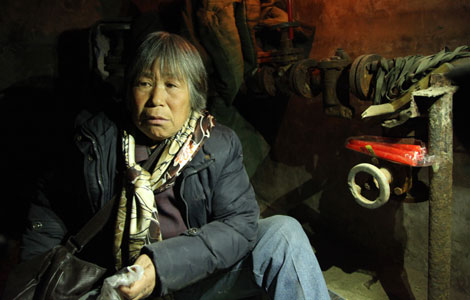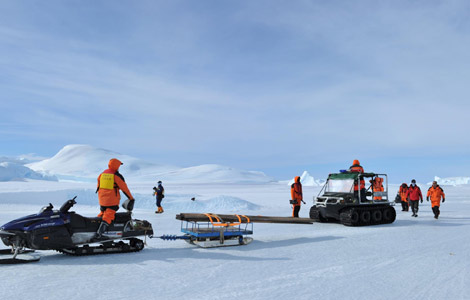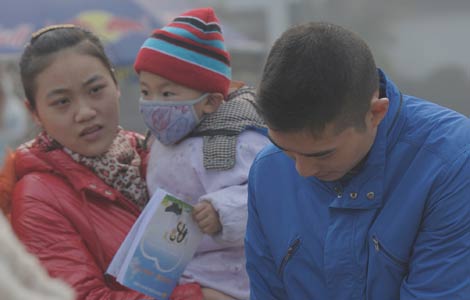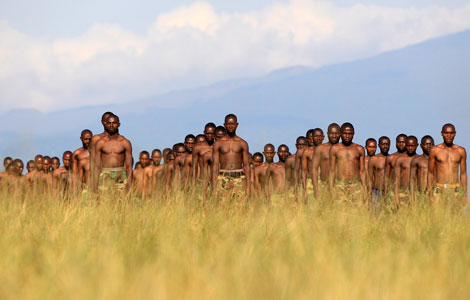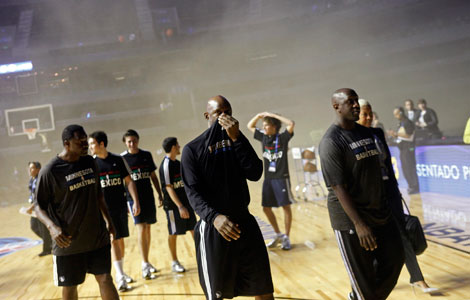Against a sea of troubles
Updated: 2013-12-06 08:54
(China Daily)
|
||||||||
The typhoon damaged most of the local medical facilities, and those that remained relatively unscathed lack materials.
Joyoe Gadia's right leg was crushed by falling debris during the typhoon, but the 19-year-old didn't receive treatment until she was sent to the field hospital.
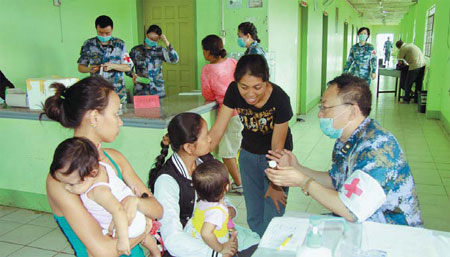 |
|
A Chinese doctor provides advice to mothers at a temporary medical facility in Tacloban, Philippines. Wang Jinglong / for China Daily |
"The people she went to see just wrapped bandages around her leg. She didn't even have a X-ray checkup," said Chen. "It has been three weeks. I can't imagine how painful it is."
An hour after she arrived at the field hospital, Gadia was transferred to the Peace Ark by helicopter, along with eight other patients, for further treatment.
Lea Topia's baby was born aboard the hospital ship. When the 31-year-old arrived at the field hospital, her waters had already broken, according to Shi Wei, one of the Chinese nurses. The medical staff helped Topia to calm down and set about arranging her transfer to the Peace Ark.
William, Topia's husband, decided to call the little boy "Ark" in memory of the ship. However, he wasn't the only birth on the ship that day. Another transferred woman delivered a girl soon after she was brought aboard.
"The point of the field hospital is that we can provide basic checkups and decide whether the injured need to go to the ship. If so, we alert the crew and by the time the patient gets to the Peace Ark, the staff and equipment are ready," said Liu. "It saves time for us, but most important, for the patients."
The field hospital has been providing free medical services for non-emergency patients too, a "luxury" for those struggling with the disaster and poverty.
A rusty nail had gone straight through Nigel Padrick's left foot as the 13-year-old ran barefoot through the debris.
"We don't have the money to go to the hospital, so I pulled out the nail myself," said his mother, Lorna Nogal. "But people said the wound might become infected, so I carried him to the Chinese hospital. I'm very grateful to the doctors who helped us."
Lilibeth Pada, the head of a nearby village with a population of 2,500, said 90 percent of the houses in the village were damaged in the typhoon. Along with food and clean water, medical services are the most urgent requirement for the locals living in unsanitary makeshift shelters.
"Skin diseases and diarrhea are common complaints in the evacuation centers," said Pada. "The field hospital can provide basic treatment for the injured and help people with common ailments, thus saving the ship's resources for those with acute illnesses or injuries."
On the day it opened, the field hospital treated 65 patients. The second day brought 85, and there were 131 on the third, according to Lu Jing, the head nurse. The facility is now receiving more than 200 patients every day and is open 24/7 so treatment can be provided for as many people as possible, she said, adding that the "patient radius" has widened. .
"Initially, most of the patients came from the surrounding villages, but as word spread, people started to arrive from a city 200 kilometers away."
Leyte Provincial Hospital was badly damaged during the typhoon, forcing the immediate suspension of services. Standing just 2 kilometers inland, the hospital was engulfed by surging water, and some of its roofs were washed away.
Most Viewed
Editor's Picks
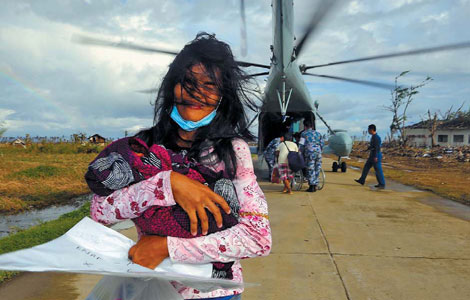
|

|

|
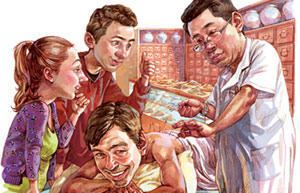
|

|
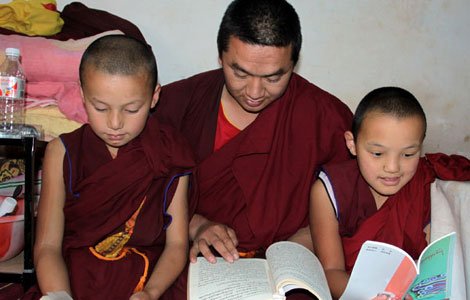
|
Today's Top News
Cornering e-commerce fraud
Nelson Mandela has died: President Zuma
Broader economic prospects pursued
FDI in 2014 looks cloudy
Education reform to reduce reliance on gaokao
SF mayor lauds Optics Valley
Director sued over family planning breach
Banks not allowed to use Bitcoin
US Weekly

|

|

